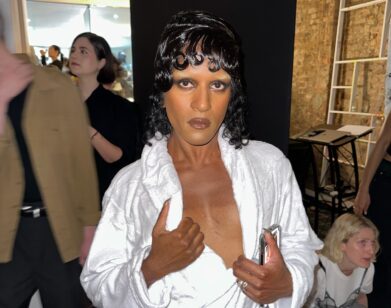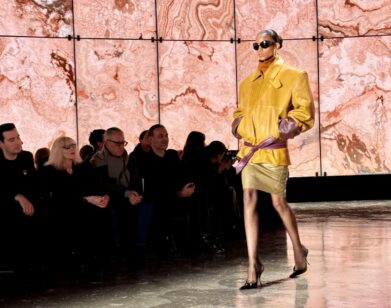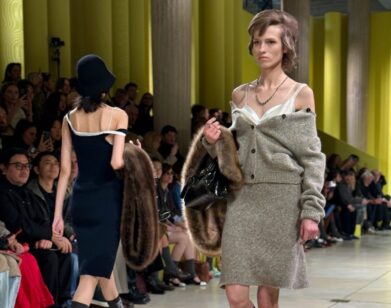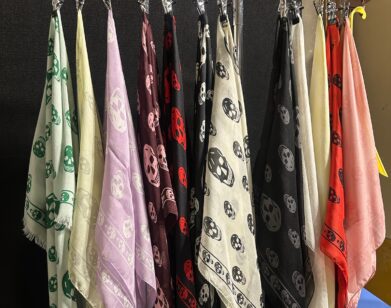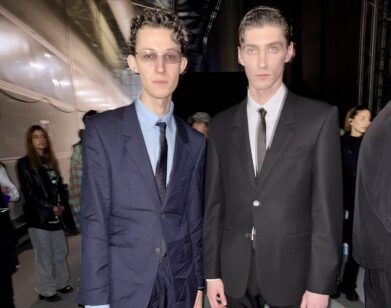Ivan Bart
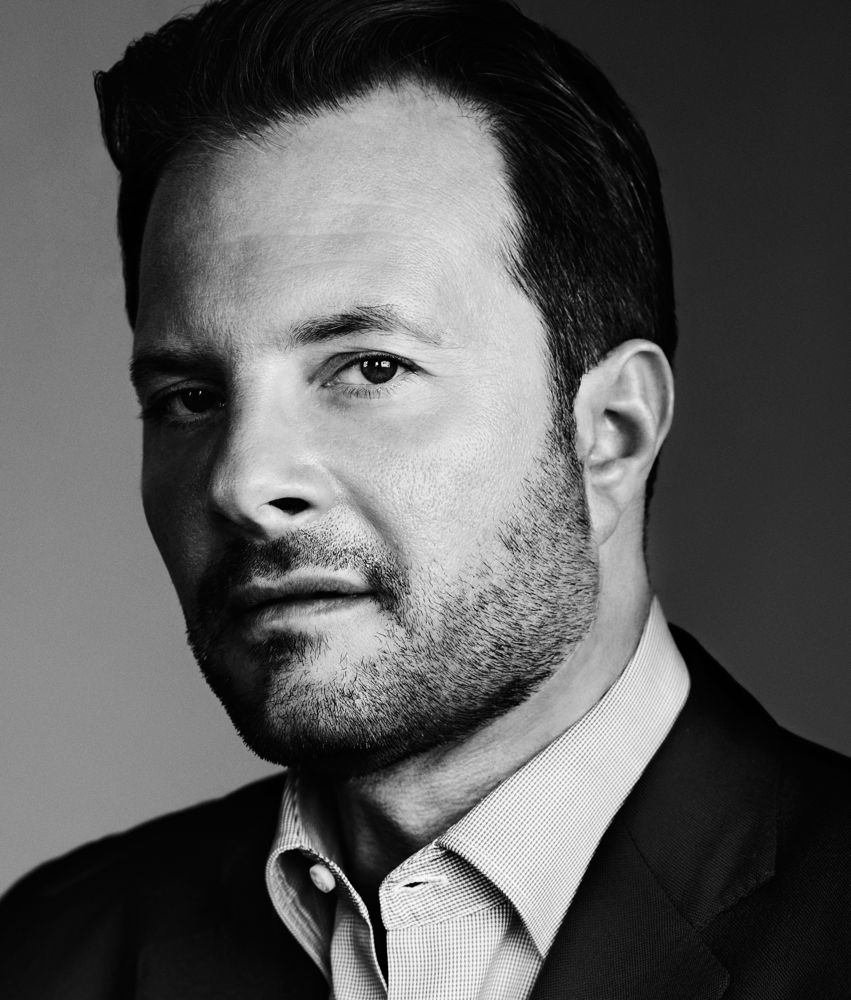
Unless you really like acting, don’t even try. Most people think that a top model is going to go into the world of acting. Well, I say, you better be good. Ivan Hart
IVAN BART: Before you start asking me questions, I hope it gets stated in this thing that, for the record, that I didn’t want to participate.
DAVID COLMAN: Okay.
BART: Because—and this is key—I always feel like our work is really about our clients. It’s not about us. There seems to be a big push for me to participate. Also, for the record, I want to say that I’m very proud of some of the managers that are at IMG who are being featured but also I want it to be stated that it’s really about the global team of IMG Models—its five offices. I feel where we outweigh our competitors is the fact that we do have a network that’s very strong and is in all the fashion capitals: New York, London, Milan, Paris, and now Sydney. We’re very connected and we work well, and by featuring some of our managers, it’s not to say that there aren’t many, many more of equal importance.
COLMAN: The story is more about getting a flavor of everyone’s personal history and their perspectives on how the modeling business has changed over the last 20 or 30 years. It’s not about who has a better agency.
BART: That’s fine. But when you put competitors in a room … It would be the same thing if we were doing a story on Interview, Vanity Fair, V Magazine, and Vogue. One would feel like, what are their perspectives and how do they compare? So it is what it is.
COLMAN: I don’t think the average reader knows enough about the differences between modeling agencies to actually evaluate, “Oh, well … It’s a competition.”
BART: Which is even more key as to why I want the consumer to understand that we are the best. [laughs] We work hard. We take our jobs very seriously. Managing talent and managing it well is what we do daily.
COLMAN: How did you get into the modeling industry?
BART: I was raised in Brooklyn. I’m a Brooklynite. I’m very happy that Brooklyn’s getting its hipster moment. I grew up in Bensonhurst. It’s actually not far from the Verrazano Bridge. It’s still fun to go on a summer night to ride the Cyclone—still, to this day, it’s the scariest thing.
COLMAN: So I guess you grew up wanting to make it in New York?
BART: I really was very confused for a long time about what I wanted to do. I thought I wanted to be a psychologist, so I have a psych degree. Then I took time off to try to figure it out, and I did what a lot of people did, got a backpack and toured Europe for a while. I realized I didn’t want to be in clinical psychology. I didn’t want to deal with people’s pain every day. I wanted to be in something that was a little bit more lively, exciting, fun. I started doing PR, and this PR firm had a very small modeling firm attached to it—this was in 1986—so I took my opportunity to work at this modeling firm and learn. I started representing a young talent named Marni Malinosky. We were a very tiny boutique firm up against the big boys, Elite and Ford. It was so exciting when Marni did Elle magazine! I started to understand that I had a talent for the job, and I worked at a few different firms, and learned about branding and other stuff, and in 1994 I accepted a position as creative director at IMG Models. They were just starting the model division. My mentor, Chuck Bennett, had already made some great moves. We had Niki Taylor and Tyra Banks, who he signed. But my mandate was to try to build the business. So slowly but surely, we developed Guinevere van Seenus, and then Carolyn Murphy joined us, and then Angela Lindvall and Bridget Hall, and suddenly there was something happening at IMG. And you know, at that time, the grunge bands were happening. Nirvana was going on. Marc Jacobs was doing a grunge line, and the models started to reflect that. Right before that, the supermodels were around and they’d get dressed up in their Versace clothes and go out at night. It was clubbing. It was fun. But the generation of models that I started to work with at IMG preferred to be in a pair of jeans and go to a pool hall. Everybody wanted to listen to grunge music. The funny thing about what’s going on now is that clubbing is back and the current generation of models want to wear makeup, get dressed up, look fabulous, and go out. We’re in that moment right now. We have such a great group of young, fresh women right now. They love it. It’s almost like it’s a new supermodel era.
COLMAN: Who are the girls that you’re talking about?
BART: Martha Hunt, Hanne Gaby Odiele, Barbara Palvin, Andreea Diaconu, Diana Moldovan. These are the new generation. And let’s not forget, we have Kate Upton. That’s when you talk supermodel.
COLMAN: She’s really taken over. My brother knows who Kate Upton is and he does not know the name of any other model.
BART: Here’s the thing: it’s the management that defines who we are—that somebody like Tilda Lindstam, who’s unique and special and artistic and interesting, and Kate Upton can exist in the same firm, because we manage each model individually. I realized that when we had hipster women, and Heidi Klum, and Gisele Bündchen, and Kate Moss was signed by us. There is no definition on what the look is—it’s really who you are, the personality. Because the only people that ever really make it are people who walk into a room, own it, and you feel it. You just feel it. You know this person is a star. But the other thing is the longevity of careers has continued. People like Carolyn Murphy and Stephanie Seymour… I love the fact that we represent Lauren Hutton. I love the fact that we have China Machado. We also represent a tremendous amount of celebrities, too. Laetitia Casta is an icon. We represent Milla Jovovich and Liv Tyler. I think IMG Models really is about excellence. That’s who we are.
COLMAN: Is there any particular moment in your career that means something special to you?
BART: When I came to IMG, Stephanie Seymour had almost simultaneously signed with us. She was already a supermodel, and my expertise was in developing young talent. So it was a very big challenge for me to take on her career. It was a big learning curve. I want to thank Stephanie for really teaching me a lot about being an extraordinary manager. She already had such a big career and was handled by many different people. So it was about finding a rhythm of working with a top talent. I think a lot of managers out there are young and don’t have a lot of life experience, so for me it was a privilege. I’ll never forget how honored I was to be invited to Stephanie and Peter Brant’s wedding near Paris. I remember Naomi Campbell walked in and was the maid of honor. All of it just brought me to another place. What I learned from working with Stephanie was how to respect the lives of my clients. Often everything happens so transactionally in our industry. But there is an important human element to what we do.
For more model agents, click here.

